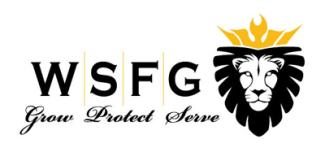
Deciding What to Do with Your 401(k) Plan When You Change Jobs
When you change jobs, you need to decide what to do with the money in your 401(k) plan. Should you leave it where it is or take it with you? Should you roll the money over into an IRA or into your new employer's retirement plan?
As you consider your options, keep in mind that one of the greatest advantages of a 401(k) plan is that it allows you to save for retirement on a tax-deferred (or in the case of Roth accounts, potentially tax-free) basis. When changing jobs, it's essential to consider the continued tax-deferral of these retirement funds, and, if possible, to avoid current taxes and penalties that can eat into the amount of money you've saved.
Take the money and run
When you leave your current employer, you can withdraw your 401(k) funds in a lump sum. To do this, simply instruct your 401(k) plan administrator to cut you a check. Then you're free to do whatever you please with those funds. You can use them to meet expenses (e.g., medical bills, college tuition), put them toward a large purchase (e.g., a home or car), or invest them elsewhere.
While cashing out is certainly tempting, it's almost never a good idea. Taking a lump sum distribution from your 401(k) can significantly reduce your retirement savings, and is generally not advisable unless you urgently need money and have no other alternatives. Not only will you miss out on the continued tax-deferral of your 401(k) funds, but you'll also face an immediate tax bite.
First, you'll have to pay federal (and possibly state) income tax on the money you withdraw (except for the amount of any after-tax contributions you've made). If the amount is large enough, you could even be pushed into a higher tax bracket for the year. If you're under age 59½, you'll generally have to pay a 10% premature distribution penalty tax in addition to regular income tax, unless you qualify for an exception. (For instance, you're generally exempt from this penalty if you're 55 or older when you leave your job.) And, because your employer is also required to withhold 20% of your distribution for federal taxes, the amount of cash you get may be significantly less than you expect.
If your 401(k) plan allows Roth contributions, qualified distributions of your Roth contributions and earnings will be free from federal income tax. If you receive a nonqualified distribution from a Roth 401(k) account, only the earnings (not your original Roth contributions) will be subject to income tax and potential early distribution penalties. (In general, a distribution is qualified if it is paid after you reach age 59½, become disabled, or die, and you have satisfied a five-year holding period.)
Leave the funds where they are
One option when you change jobs is simply to leave the funds in your old employer's 401(k) plan where they will continue to grow tax deferred.
However, you may not always have this opportunity. If your vested 401(k) balance is $5,000 or less, your employer can require you to take your money out of the plan when you leave the company. (Your vested 401(k) balance consists of anything you've contributed to the plan, any employer contributions you have the right to receive, and any investment earnings on these contributions.) Your employer may also require that you withdraw your funds once you reach the plan's normal retirement age.
Leaving your money in your old employer's 401(k) plan may be a good idea if you're happy with the investment alternatives offered or you need time to explore other options. You may also want to leave the funds where they are temporarily if your new employer offers a 401(k) plan but requires new employees to work for the company for a certain length of time before allowing them to participate. When the waiting period is up, you can have the plan administrator of your old employer's 401(k) transfer your funds to your new employer's 401(k) (assuming the new plan accepts rollover contributions).
Transfer the funds directly to your new employer's retirement plan or to an IRA (a direct rollover)
Just as you can always withdraw the funds from your 401(k) when you leave your job, you can always roll over your 401(k) funds to your new employer's retirement plan if the new plan allows it. You can also roll over your funds to a traditional IRA. You can either transfer the funds to a traditional IRA that you already have, or open a new IRA to receive the funds. There's no dollar limit on how much 401(k) money you can transfer to an IRA.
You can also roll over ("convert") your non-Roth 401(k) money to a Roth IRA. The taxable portion of your distribution from the 401(k) plan will be included in your income at the time of the rollover.
If you've made Roth contributions to your 401(k) plan, you can only roll those funds over into another Roth 401(k) plan or Roth 403(b) plan (if your new employer's plan accepts rollovers) or to a Roth IRA.
Generally, the best way to roll over funds is to have your 401(k) plan directly transfer your funds to your new employer's retirement plan or to an IRA you've established. A direct rollover is simply a transfer of assets from the trustee or custodian of one retirement savings plan to the trustee or custodian of another (a "trustee-to-trustee transfer"). It's a seamless process that allows your retirement savings to remain tax deferred without interruption. Once you fill out the necessary paperwork, your 401(k) funds move directly to your new employer's retirement plan or to your IRA; the money never passes through your hands. And, if you directly roll over your 401(k) funds following federal rollover rules, no federal income tax will be withheld.
Note: In some cases, your old plan may mail you a check made payable to the trustee or custodian of your employer-sponsored retirement plan or IRA. If that happens, don't be concerned. This is still considered to be a direct rollover. Bring or mail the check to the institution acting as trustee or custodian of your retirement plan or IRA.
Have the distribution check made out to you, then deposit the funds in your new employer's retirement plan or in an IRA (an indirect rollover)
You can also roll over funds to an IRA or another employer-sponsored retirement plan (if that plan accepts rollover contributions) by having your 401(k) distribution check made out to you and depositing the funds to your new retirement savings vehicle yourself within 60 days. This is sometimes referred to as an indirect rollover.
However, think twice before choosing this option. Because you effectively have use of this money until you redeposit it, your 401(k) plan is required to withhold 20% for federal income taxes on the taxable portion of your distribution (you get credit for this withholding when you file your federal income tax return for the year). Unless you make up this 20% with out-of-pocket funds when you make your rollover deposit, the amount withheld will be considered a taxable distribution, subject to regular income tax and generally a 10% premature distribution penalty (if you're under age 59½).
If you do choose to receive the funds through an indirect rollover, don't put off redepositing the funds. If you don't make your rollover deposit within 60 days, the entire amount will be considered a taxable distribution.
Which option is appropriate?
Is it better to leave your funds in a 401(k) plan (your current plan or a new employer's plan), or roll them over into an IRA?
Each retirement savings vehicle has advantages and disadvantages. Here are some points to consider:
- A traditional IRA can offer almost unlimited investment options; a 401(k) plan limits you to the investment options offered by the plan.
- A 401(k) may offer a higher level of protection from creditors.
- A 401(k) may allow you to borrow against the value of your account, depending on plan rules.
- A 401(k) plan may allow penalty-free withdrawals if you leave your job at age 55 or later. Penalty-free withdrawals are generally not available from IRAs until age 59½.
- You must take required minimum distributions from traditional IRAs once you reach age 70½. You generally don't need to take required distributions from 401(k) plans until you retire.
- Unlike Roth 401(k) accounts, you don't need to take any lifetime required minimum distributions from Roth IRAs.
- Employer stock may be eligible for more favorable tax treatment if distributed from a 401(k) plan rather than an IRA.
- Both IRAs and 401(k) plans may involve investment-related expenses or account fees. In addition, both may provide services such as investment advice, education materials, and retirement planning. Be sure to understand what your plan provides, and what you may be giving up or gaining by transferring your funds.
Finally, no matter which option you choose, you may want to discuss your particular situation with a tax professional (as well as your plan administrator) before deciding what to do with the funds in your 401(k).
**This is a Forefield 3rd party article which is being submitted by Wealth Strategies Financial Group.
Copyright 2018 Broadridge Advisor Solutions

